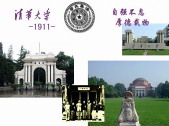 | What are Chinese tertiary education institutions?
According to the 2002 education report published by the Ministry of Education, by 2002, there were 16 million students at higher education institutions and the gross enrollment rate was 15%. In the year, 5,428,200 senior secondary school graduates were enrolled into regular universities and advanced vocational colleges. This included |
3,205,000 students enrolled into regular higher education institutions and 2,223,200 in adult education institutions, which was 522,200 and 263,900, respectively. The number of students at regular and adult higher education institutions and advanced vocational schools reached 14,625,200, with 9,033,600 at regular universities, 5,591,600 at adult higher education institutions. In addition, universities and research institutions accepted 202,600 postgraduates, 37,400 more than the year before. The total number of postgraduates at schools reached 501,000, 107,800 more than in the previous year. |